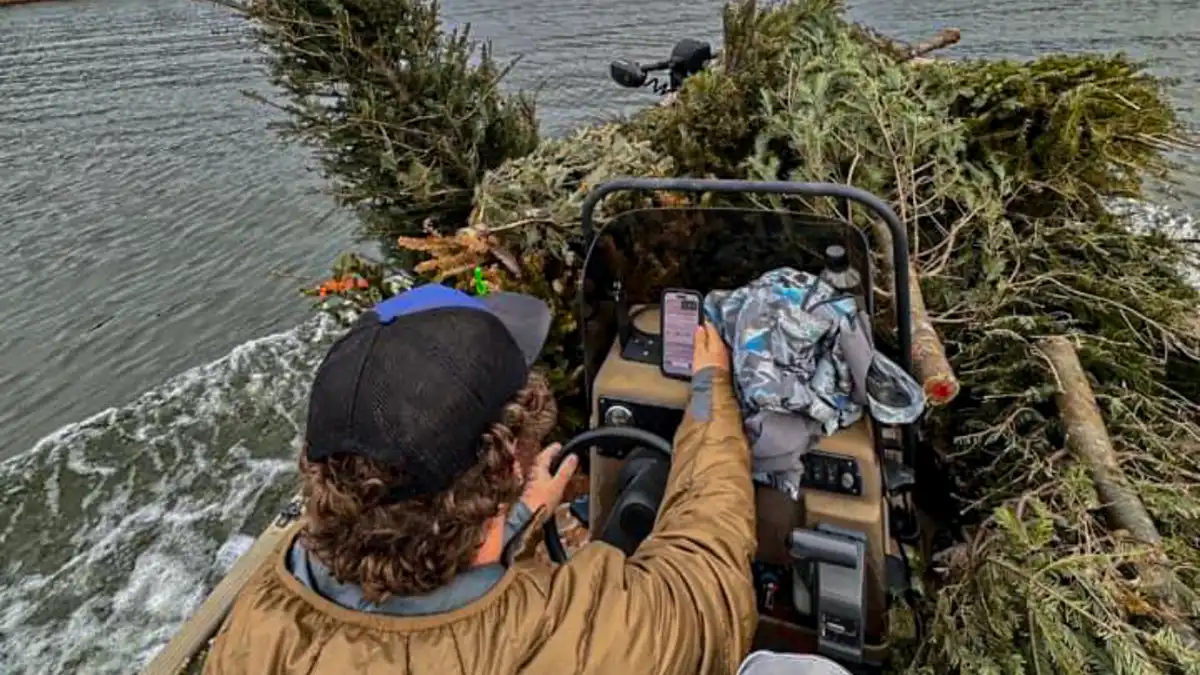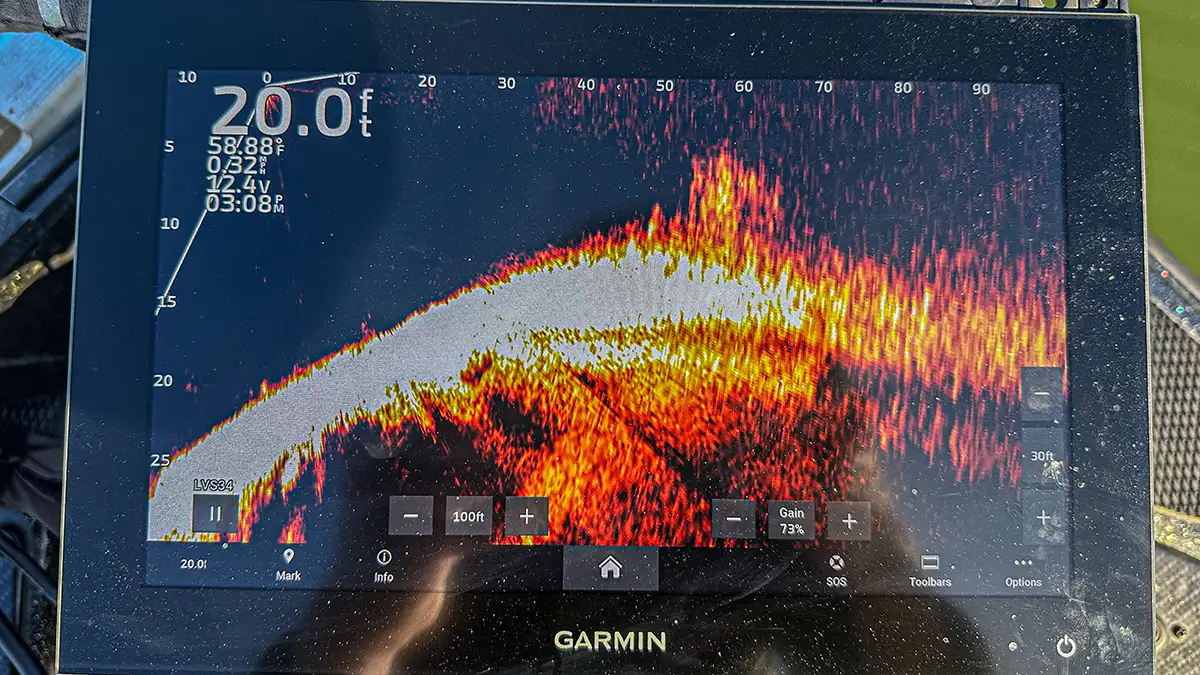One of the best ways to consistently catch fish on any body of water is by sinking your own brush piles. This is a great way to ensure you have your own personal fishing spots that haven’t been found by hundreds of other anglers. I’ve sunk brush piles throughout my entire life, and I quickly learned there’s both a right and wrong way to do it. While the process of building and sinking them may sound like a daunting task, the rewards far outweigh the work. This feature explains everything I’ve learned about how and where to build brush piles.
GATHERING MATERIALS
The first step in building a brush pile is gathering materials. Everyone builds theirs differently, however these are the materials I’ve found the most success with. To start you’ll need cinderblocks to weigh your brush down, heavy-duty rope or chains to connect the block to your brush, and some sort of live tree. I make sure to always sink live trees as opposed to dead ones. I’ve found that using live tree branches is much more productive than creating man-made structure out of unnatural materials such as PVC. It seems to me that bass prefer to reside around natural cover instead of something that wouldn’t typically exist in their environment. Plus, the nutrients found in live trees attract baitfish and other types of forage that bass love to eat. Some of my favorite trees to sink are live pine and cedar.
HOW TO BUILD THEM
The next step is building your brush pile. The most important part is ensuring that you’ve used enough weight to keep it in place. I typically use three to four small pine trees per pile, with one cinderblock for every branch or tree I included. Connect the brush to the cinderblocks using a material that doesn’t deteriorate under water. For this I either use heavy-duty rope or chains.
Secure the cord or chains around the cinderblock, and then wrap it around the base of the tree as many times as possible and tie a knot. It’s important not to wrap your cord or chain around the entire tree or branch as it creates a higher likelihood your lures will get snagged. Once you’ve got your everything connected, you’re ready to start determining the size and location of your brush pile.
DETERMINING SIZE
Determining the size you want is another crucial step in creating the ultimate brush pile. I vary the sizes of my piles based on a few different factors, the biggest of which is fishing pressure. If I’m putting one in an obvious location that I know receives lots of pressure, I generally make it smaller. This is a great way to keep people from noticing it, greatly cutting down on the amount of anglers that will fish your newly created sweet spot.
I’ll make giant brush piles on locations that don’t stand out or receive tons of pressure. This is another great way to create fantastic fishing locations that fly under the radar. Larger piles do a better job of attracting fish than their smaller counterparts, and two can be better than one. I like to drop two large piles next to each other whenever I can. That way if you end up getting hung up or spooking fish on one, you still have another productive location to throw at.
Paying attention to the height of your piles is also important. I like for mine to stick high up into the water column. This allows bass to suspend around the brush, as opposed to sitting on the bottom. This is ideal for calling bass out of brush using lures such as a jerkbait, glide bait or a jig and minnow.
Another reason I like tall piles is to attract shad. Shad tend to congregate and spawn around cover that’s right beneath the surface of the water. Building brush piles that come up to the top is a great way to generate a productive shad spawn . These are some of my favorite brush piles to fish first thing in the morning as bait tends to congregate here overnight.
WHERE TO DROP THEM
Last but certainly not least, you have to decide where to sink your brush. While this may sound easy, this is likely the hardest part of the entire process. You don’t want all your hard work to go to waste by choosing a subpar location, so its important to do your research before hitting the water. One of the biggest mistakes you can make when sinking brush is putting it where there is a lot of moving water. This is especially true in location such as the Tennessee River, or other large river systems.
These bodies of water receive tons of current, and are prone to washing your brush piles into the channel, never to be seen again. Because of this, I generally avoid sinking brush on main lake ledges or points that receive a steady flow. While it is possible to place brush in these locations, be sure to add extra weight as your piles are likely to get washed away.
TIME MATTERS
The next thing I pay attention to is the time of year I want to fish the piles. If I’m sinking brush that I plan to fish over the summer, I generally opt for deeper, main lake locations. As water temperatures rise, fish tend to move offshore to their summer haunts. Placing brush around these features is an easy way to lure bass to your newly created fishing spot. Places such as main lake flats, humps and bars are all great high percentage locations to create your own piles.
If I’m sinking brush to fish in the spring however, I’ll often place it around the mouth of bays, pockets and other protected spawning areas. Creating brush piles around docks, shallow flats and points are all great locations to attract bass on their way to spawn. I’ve caught some giant bass using these techniques, and it doesn’t require any crazy electronics or equipment. All you need is some brush, cinderblocks and a fishing rod and you’re ready to start reeling them in.
While this process may seem like a pain, it’s super rewarding once you start catching fish out of the cover you built. Not only is this a great way to catch bass, but it also provides bass with the necessary cover they need to both survive and flourish. If your looking to become a better bass fisherman on your local body of water, there’s no better way than building and sinking your own brush piles.
















